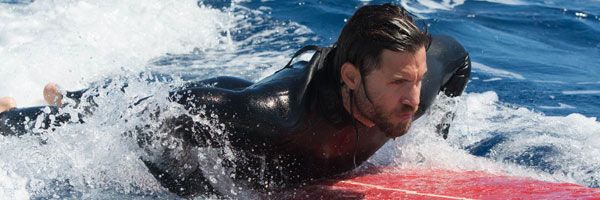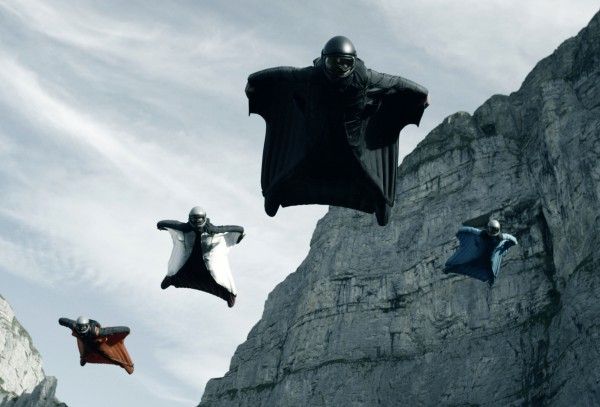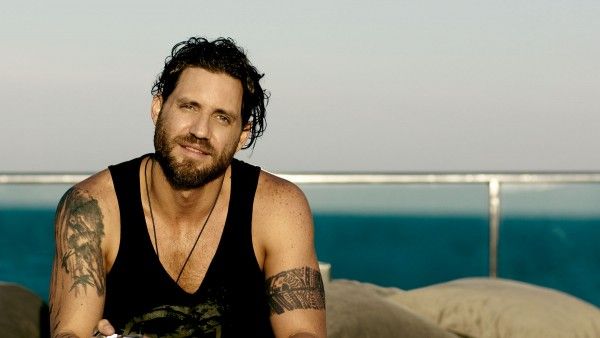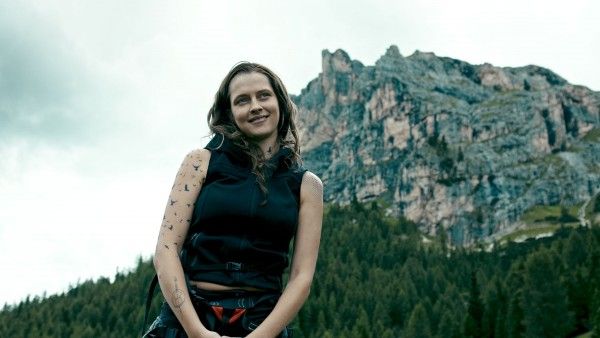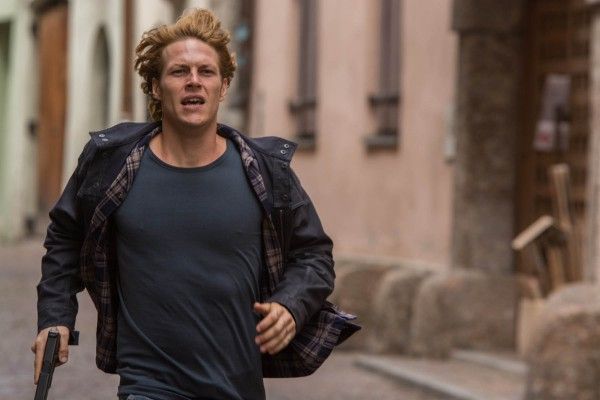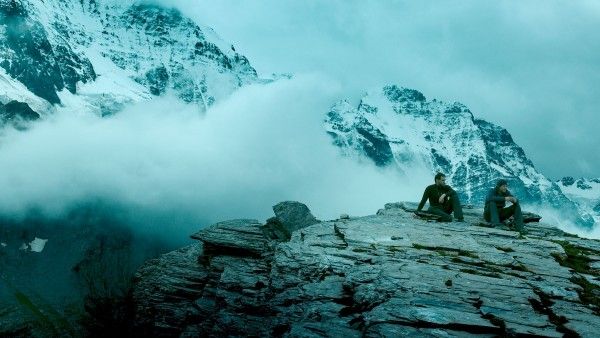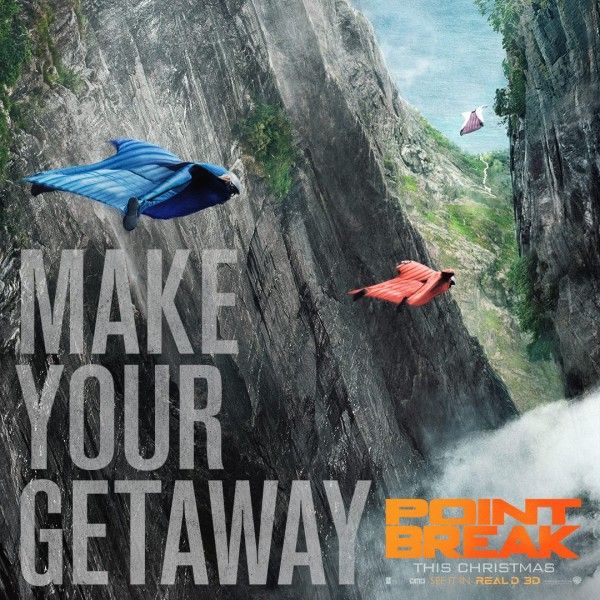In surfing, the term “point break” is defined as a substantial wave formed by a swell that builds around a coastline featuring a promontory or point. In 1991, Kathryn Bigelow directed the now iconic action-thriller of the same name, imbuing the once somewhat unknown moniker with new meaning. Since the film’s release over two decades ago it has become a cult classic and one of the most beloved action films of the 90s, even inspiring a reality play called Point Break Live! The surfing idiom used to title the film has become synonymous with a renegade masculinity emboldened by adrenaline and the thrill of affirming one’s life by risking it. The men of Point Break are Point Break in other words, men who jump out of planes, rob banks and ride the world’s biggest, gnarliest waves for more than just kicks. As Roger Ebert so eloquently put it when he reviewed the film: “They aren't men of action, but men of thought who choose action as a way of expressing their beliefs.”
It was with this notion in mind that I made my way to Austria to visit the set of the Point Break remake in August 2014 along with a small group of fellow journalists. After settling into our hotel in the quaint town of Villach, it became clear that the set we were to visit was shrouded not only in secrecy but in ephemerality as well. The film is global in scope and as such, scenes were shot in numerous far-flung locales including French Polynesia, Italy, Venezuela, Mexico and Switzerland, to name a few. The set in Austria would exist for a few days only, before being broken down and reappearing in different form in some other part of the world. This international aspect of the film seems to be a central part of its identity, and is meant to create a tangible feeling of the mobility and freedom that come with living outside the lines of society, off the grid and by one’s own code of ethics.
As night fell we were taken deeper into the hilly, remote countryside by shuttle to a modern, minimalist chalet teeming with attractive extras, dressed for a nightclub or in this case, a next-level house party. There was a massive bonfire outside that required near constant stoking due to the intermittent rain and people dancing throughout the venue to tracks spun by none other than DJ Steve Aoki. We were escorted upstairs to a small room with chairs overlooking the scene below, where we would conduct several interviews over the span of the evening. Below I’ve put together a list of interesting details gleaned from my conversations with the cast and producer Andrew Kosove.
- The film takes place over the period of about a month, and took close to a year to shoot. It was shot in over 10 countries and 4 continents. Point Break uses physical locations as much as possible, and the producers tried to be judicious when implementing green screens or VFX.
- Chris Taylor, a business executive at Largo Entertainment, the production company that made the original Point Break, acquired the rights to remake the film after the business folded. He later partnered with Alcon Entertainment to develop the remake script over a 3-year period with writer Kurt Wimmer and director Ericson Core.
- Core also acts as cinematographer, a fact that actress Teresa Palmer called “a gift because he is so involved in every single aspect of this film.”
- The production relied on a variety of different digital cameras in order to depict extreme sports in new and innovative ways, including Go-Pros, the RED camera and an Opticom which Kosove described as a RED camera fastened to a remote controlled helicopter
- Weather conditions in Europe were disastrous during filming, with torrential rain making it extremely challenging and dangerous to shoot second unit stunts.
- Some of the world’s best athletes worked on this film, including Jeb Corliss, whom Kosove cited as being “the greatest wing suit athlete in the world”. Legendary surfers Laird Hamilton and Sebastian Zietz, and pro skateboarder Bob Burnquist were also involved.
-
While shooting second unit footage at the Jaws surf break in Maui, the crew was fortunate enough to catch one of the largest wave breaks of the last decade, being ridden by the world’s top big wave surfers.
- The film includes a sequence shot at Venezuela’s legendary Angel Falls, which is protected and as such required much participation from the local government as well as numerous permits.
- The Angel Falls sequence is an expensive one, with a structure that cost upwards of $500K to build. It consisted of a platform that was approximately the size of a football field just beneath the summit of the falls where the crew set up camp so as not to disrupt the environment by making camp on the ground. Kosove likened the shoot at Angel Falls to a “full-scale military operation”.
- In terms of tone and the overall approach to Point Break, Kosove wanted to go back to what he feels action films used to be, with higher stakes, “real action, real consequences and people getting hurt”.
- Both the original film and the remake share an undercurrent of political commentary, and a questioning of the status quo by radical means.
- The villains in the film are simultaneously terrorists and extreme protectors of the environment. Kosove stated that everything they do is to be “one with nature”. As such, the film explores themes of eco-terrorism and radical environmentalism as the driving force underlying the villains’ actions.
- Luke Bracey won the role of Johnny Utah after an extensive audition process, and he got the part due to the fact that he seemed “real” and unaffected, according to Kosove. An added bonus was the fact that Bracey has been surfing and playing rugby since childhood.
- This iteration of Johnny Utah sees the character as more of a wounded bird with demons to overcome; a slightly more damaged and broken man than the character we know from the 1991 film.
-
Bracey came in to be interviewed with a face made up to look beaten. He explained with a grin that his character had been in a highly choreographed fight with Bodhi, which takes place in an underground fight club in France.
- Teresa Palmer, who plays Samsara in the film, describes her character as a kind of oracle, a woman who is “very deeply rooted in her spirituality and has been on this incredibly complex journey from when she was born… and these men look to her for answers.”
- Palmer is the only female in the lead cast and mentioned that what drew her to Samsara was the strength and empowered wisdom of the character.
- Teresa Palmer pointed out that, coincidentally, her son’s name is Bodhi, and that she named him with no prior knowledge of Point Break or the character.
- Edgar Ramirez, who plays Bodhi, likened his character’s “wolf pack” of friends and criminals as something akin to “a ring of monks” due to their strict code of ethics and commitment to their cause.
- Despite being a self-proclaimed huge fan of the original film, Ramirez did not go back to the source material to prepare because he felt that what Swayze did with Bodhi was “beautiful and unique”, and that attempting to redo it shouldn’t be the goal. He described his performance and the film in general as a reimagining and as such, something unique and new.
Point Break differentiates itself from its predecessor for a few reasons: an action thriller with extreme sports and real athletes as a significant focal element of the story, a lengthy and global production schedule with locations in multiple countries and continents, an international cast, the list goes on. Despite these notable and very obvious differences, the underlying themes of the remake seem to remain firmly entrenched in what made the original Point Break so beloved; larger-than-life action set pieces, invigorating stunts, and deeper ideas of rebellion, anarchy, rejecting the socio-political status quo, living off the grid and finding what Swayze’s Bodhi had called “the ultimate ride”. It is these thematic elements that can be conjured upon hearing the phrase “point break”, and those same elements seem to be what inspired the cast and filmmakers to revisit the material in a new way.
Click here for all our previous coverage on Point Break.

